This article was co-authored by Andrew Carberry, MPH. Andrew Carberry is a Food Systems Expert and the Senior Program Associate at the Wallace Centere at Winrock International in Little Rock, Arkansas. He has worked in food systems since 2008 and has experience working on farm-to-school projects, food safety programs, and working with local and state coalitions in Arkansas. He is a graduate of the College of William and Mary and holds a Masters degree in public health and nutrition from the University of Tennessee.
wikiHow marks an article as reader-approved once it receives enough positive feedback. In this case, 84% of readers who voted found the article helpful, earning it our reader-approved status.
This article has been viewed 251,815 times.
It's happened many times before: you pull your garden hose out from the garage, screw it onto the faucet, attach that spiffy nozzle you got from the hardware store, turned on the water, and got soaked as the leaky hose gushed water all over you. Instead of replacing that hose, consider some simple methods to mend it.
Steps
-
1Locate the leaks. If it didn't squirt you in the face, you may have to go on a hole hunt. Does your hose leak at the faucet? Does it leak where you've joined two hoses? Does it leak at the point where you've attached a sprinkler head or spraying device? Or does it leak somewhere in the middle?[1]
-
2Fix leaky joints. Detach the hose from other hoses or devices, and thoroughly lube the threads of each with petroleum jelly.
- Reattach and you will notice fewer leaks, or even none at all. Be careful trying to reattach the items as your hands will be slick.
- Another option is to use a rubber washer. These are available at a hardware or garden supply store and can be slipped onto the "female" end of the hose. This should prevent leaking when it is joined to another hose or device.[2]
Advertisement -
3Use rubber cement for tears or punctures.[3]
- Using a dry paper towel, dry off the section of hose where there is a hole or cut. If the hole is within a foot (30 cm) of the end of the hose, try using a piece of dowel with paper towel wrapped around it to clean the inside of the hose.
- Apply some rubber cement to — and around — the hole. Fill in the hole, but not so much that it gets inside of the hose. This could result in clogging up the hose, and increasing the water's pressure, causing more leaks and an incentive for the hose to burst at that weak spot.
-
4Use a tire puncture repair kit. These are most commonly sold at bicycle repair shops, body shops, car-part stores, etc.[4]
- Carefully read the directions of use, and apply the repair substance to the hole.
- After drying, buy a small sheet of solid rubber from a craft store, hardware store or other supplier. You can also cut a small square out of an old rubber rain boot, bicycle tire, or any other rubber item you no longer use.
- Glue it over the leak and let dry (use a glue able to keep the rubber attached strongly
-
5Get a coupling for more severe tears. They are available at a hardware store. Repair couplings work by allowing you to cut out the leaky portion of hose and re-join it where you made the cuts.[5]
- Shutoff the water to the hose and cut out the bad portion.
- Splice in the repair coupling. It will have detailed instructions on the label.
-
6Finished. Now go dry yourself off!
Community Q&A
-
QuestionHow do I clean a black rubber garden hose so the black doesn't come off on my hands?
 Community AnswerYou can lightly sand the hose to remove the oxidized surface. Or, you can try painting it with an elastomeric paint, if the sanding doesn't work.
Community AnswerYou can lightly sand the hose to remove the oxidized surface. Or, you can try painting it with an elastomeric paint, if the sanding doesn't work. -
QuestionCan a garden hose be used like a snake to push a clog down a toilet?
 Community AnswerSort of, yes. You'd actually use a nozzle on the hose to let its water stream break up the clog. If the clog is deeper in the plumbing system, then just keep shoving the hose in while it's set to its strongest stream to flush out and break up anything in its path.
Community AnswerSort of, yes. You'd actually use a nozzle on the hose to let its water stream break up the clog. If the clog is deeper in the plumbing system, then just keep shoving the hose in while it's set to its strongest stream to flush out and break up anything in its path. -
QuestionHow can I repair an expanding hose pipe when it is in the middle of the hose?
 Community AnswerVisit the hardware store and pick up a joiner and some hose clamps. Then, cut out the bad section, loosely put the clamps on the hose, install the joiner into each pipe, and tighten the clamps. Be careful not to over-tighten the clamps though.
Community AnswerVisit the hardware store and pick up a joiner and some hose clamps. Then, cut out the bad section, loosely put the clamps on the hose, install the joiner into each pipe, and tighten the clamps. Be careful not to over-tighten the clamps though.
Warnings
- If you use "Super glue" or other strong adhesive, be very careful because it can really stick your fingers together or even your hands.⧼thumbs_response⧽
- Do not burn yourself with heat gun if you use one.⧼thumbs_response⧽
Things You'll Need
- Superglue
- Tire repair kit
- Rubber cement
- Rubber square (from rain boot or purchased piece)
- Hose splice kit
- Rubber washers
References
- ↑ https://www.backyardboss.net/why-does-my-garden-hose-leak/
- ↑ https://www.youtube.com/watch?v=G1bWIdXL0XA
- ↑ https://reddilawnmaintenance.com/blog/maintenance/how-to-repair-a-garden-hose
- ↑ https://reddilawnmaintenance.com/blog/maintenance/how-to-repair-a-garden-hose
- ↑ https://www.wral.com/how-to-fix-a-leaking-garden-hose/12503685/
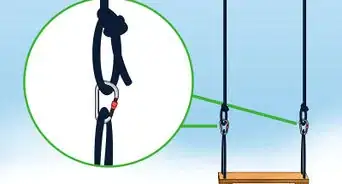
-Step-18.webp)


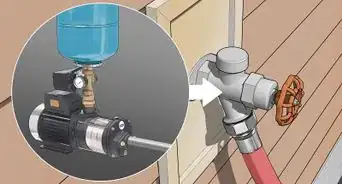
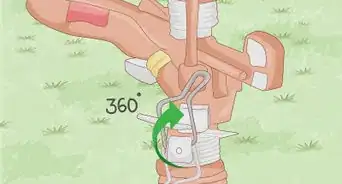
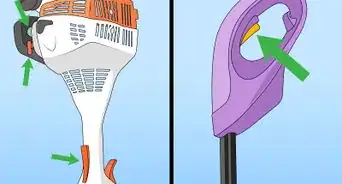

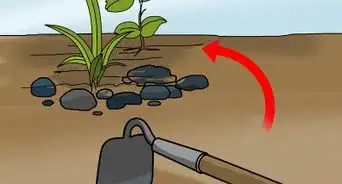
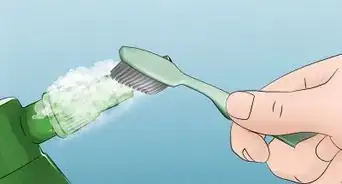
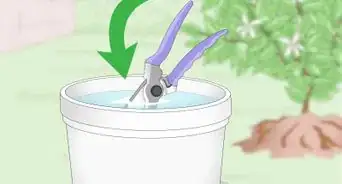











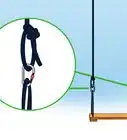
-Step-18.webp)



































